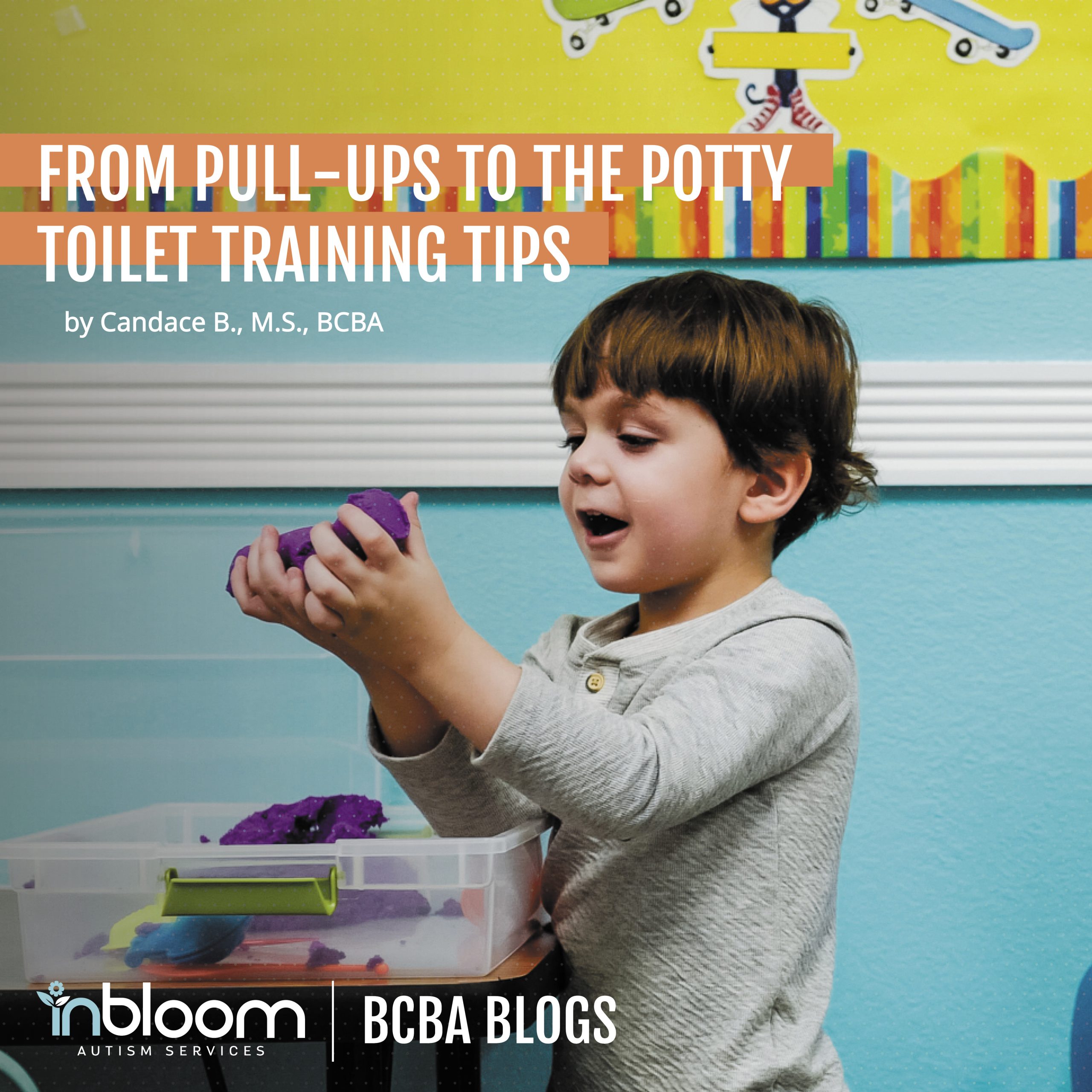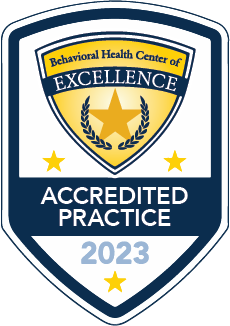April 6, 2021
From Pull-Ups to the Potty: Toilet Training Tips

So, you’re ready to make the leap and commit to potty training your child? Excellent! Whether you’re a parent, technician, or analyst, I am here to tell you all about some toilet training tips to help you finally kick those pull-ups to the curb!
Let me start by saying that the method of toilet training for children with autism is not a one-size-fits-all situation. This is an ABA Therapy blog after all, and we are all about individualized instruction and toilet training is no different! Use the information as a quick guide to assist you in deciding to start toilet training and provide important considerations in developing and executing a strategy to reach the final goal: pee-pee in the potty!
How Do I Know When my Child is Ready for the Potty?
Ask yourself these prerequisite questions:
- Does my child tolerate the toilet or show interest? You want to be sure that your child is comfortable sitting on the toilet for an extended duration.
- Can my child get on and off the toilet by themselves? Consider getting a stool to make sitting and climbing on and off easier for them.
- Have I noticed my child showing signs of being uncomfortable in a wet pull-up/diaper?
- Is my child able to pull their pants up and down?
- Can my child go a couple of hours and maintain a dry pull-up/diaper?
- Does my child understand words like potty, wet vs. dry, etc.?
- Can my child follow simple, one-step instructions without problem behavior?
This is not a complete list but there are some important skills to assess to determine your child’s readiness for toilet training. Your child doesn’t have to have all of these skills either before you decide to train but demonstrating a few (especially being comfortable on the toilet) of these can set your child up for success!
At InBloom Autism Services, we help children reach developmental milestones, like using the potty! Learn more about our ABA Therapy program.
Oh Cool! My Child is Showing Some Readiness Skills, Now What?
- Research! Hit the books! Well, now I suppose it’s Google, but find scientific journals that discuss methods and results of previous studies that focused on toilet training. Replicate a study.
- Associate visits to the bathroom with FUN! This way your child will be more motivated to visit when needed.
- Collect baseline data. Determine how often your child soils their pull-up, it can also be helpful to collect data on any patterns. Does my child urinate or have a bowel movement 10 minutes after eating or drinking?
- **If you plan to increase fluid intake for toilet training, it can be helpful to also increase fluids during baseline, so you have an accurate starting point.
- Get consistency! Ask yourself if you can commit to sticking to the toilet training plan and handle accidents. Consistency across family members and therapies is essential! If they’re in underwear in ABA, they should be in underwear at home too.
- Conduct a preference assessment. Determine what items your child is highly motivated for and preferably something you could potentially save for only toilet training. This could be a favorite candy, toy, electronic, etc.
- Buy lots of new underwear. To make things even more fun, try to pick out underwear with your child’s favorite characters, etc. on it to increase his interest and motivation to keep his underwear clean and dry.

Additional Tips for Toilet Training
For the Detail-Oriented Families
Evaluate your baseline data and develop a time-based schedule of how often you will take your child to the toilet. Common starting time frames are ten 45-minutes intervals.
- Increase and decrease the time schedule as needed for your child based on set criteria. A simple 5 minutes up or down can make a difference in a void (successful urinating in potty) or an accident.
- Determine how long your child will sit on the toilet. Average ranges of sit times can be from 2 minutes to 10 minutes depending on your child.
- Modify any of the above as needed based on the data collected daily!
- Write out a plan for rewarding (reinforcing) successful voiding on the toilet. I recommend throwing a verbal praise party paired with a tangible item for successful voids (this is where the preference assessment comes handy). How much of a reward (reinforcement) will my child get if they have an accident, but finishes on the potty? Consider differential reinforcement…For example: independent voids on the potty = enthusiastic praise and more of preferred item, accidents that finish on the potty = mild praise and less of a preferred item, and only accidents = no preferred item.
- Drop the scheduled sits if your child self-initiates for the potty by independently walking over or even requesting. If they void on the toilet independently, make a really big deal about it! Once they self-initiate, continue to give them a steady amount of fluids to drink and drop the time-based schedule. If they do not self-initiate at all for a couple of days, go back to the timed schedule.
- Implement dry checks with reinforcement. Every 10 minutes prompt your child to touch their underwear to see if is dry, if it is, provide enthusiastic praise!
Once they self-initiate, continue to give them a steady amount of fluids to drink and drop the time-based schedule.
Things to Avoid When Toilet Training
- Don’t give up! Each child is different, and some take days, weeks, or months to toilet train. Be consistent and stick it out.
- Don’t continue to use pull-ups. Underwear only unless the child is sleeping overnight.
- Don’t forget to collect data.
- Don’t use punishment methods before exhausting reinforcement methods.
- Don’t focus on bowel movements in the beginning. This can be harder for most, but easier if your child has a pattern with their bowel movements. Once your child is voiding successfully, then you can work on bowel movements.
- Never be afraid to ask for help and guidance!
The benefits of toilet training will be well worth the hours spent in the bathroom. Toilet training increases your child’s independence, dignity, and hygiene. Once your child is using the potty, it opens more opportunities to be socially accepted and to be involved in the least restrictive environment. Some schools and classrooms also require it for acceptance!
I wish you the best of luck on your toilet training journey to success!
Written by: Candace B – M.S., BCBA
InBloom Autism Services specializes in early intervention ABA Therapy. Our Therapists undergo training to develop a curriculum specifically designed for children aged 5 and under with autism. Our Learning Centers also offer a safe and enjoyable environment for children to interact with their peers. Find an InBloom ABA Therapy Learning Center near you!
Related Articles:
The Positive Effects of ABA Therapy for Children with Autism
Mealtime Made Easier: Practical Tips for Children


